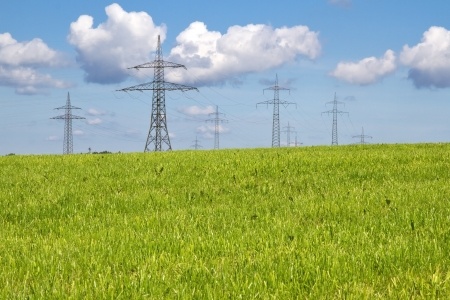 With the number of solar power installations growing at a rate of 30 to 40 percent each year, the volume of people choosing to generate their own electricity is growing. One of the most attractive aspects of creating your own grid is selling electricity back to large utility companies. With some paying as much as 25 cents per KwH in 2013, this seems like an easy way to make a residual income. However, once you begin to factor in the upfront costs of PV solar power installations and the complex nature of reselling the electricity you generate, you may not find that this approach to cash generation is right for you.
With the number of solar power installations growing at a rate of 30 to 40 percent each year, the volume of people choosing to generate their own electricity is growing. One of the most attractive aspects of creating your own grid is selling electricity back to large utility companies. With some paying as much as 25 cents per KwH in 2013, this seems like an easy way to make a residual income. However, once you begin to factor in the upfront costs of PV solar power installations and the complex nature of reselling the electricity you generate, you may not find that this approach to cash generation is right for you.
How Does an Off Grid Power System Work?
Both grid-connected systems and stand-alone systems use photovoltaics (PV) to convert solar energy into electricity. Through harnessing New Zealand’s sunshine, PV acts as a simple way to cut your carbon emissions while maintaining your usual electricity usage.
Unlike a grid-connected system, standalone versions do not have a backup form of energy. Usually, they are chosen by those who live in remote areas away from grid sources. They can cost upwards of $25,000 to install and cost more to run than grid-connected sources. As such, you have to take steps towards making your home energy efficient before you choose to install one. To make sure you do not find yourself without electricity, you also have to invest more money in a backup form of energy. For example, a diesel-powered generator. Another problem with off-grid power is that battery use will determine how long your system lasts. It can vary from 2-10 years depending on how you use your batteries.
What Are the Advantages of Solar Power on the Grid?
Before you choose to switch to solar power while staying connected to New Zealand’s main grid, you need to address your motivations. If you simply want to reduce your carbon emissions, there may not be much point. Approximately 75% of New Zealand’s energy comes from renewable sources.
However, if you envisage yourself making money from the system, you might want to look into a solar power installation. Unlike those that go off the grid, prices for on-grid solutions are at an all-time low. As such, consistently producing more energy than you need and selling it off can see the system pay for itself within as little as 7 years. In addition, banks like KiwiBank are allowing homeowners to take out loans to cover the cost of a solar power installation, which pays for a portion of the solar power system.
Unlike an off the grid solution, those that stay connected to the grid can cost as little as $6,500. In addition, you are less likely to under produce compared to those who use off the grid solutions. As a result, you don’t have to pay extra for another source of energy, and you sometimes have the chance to sell your excess back to an energy company.
Money Making Basics
Before you go ahead and purchase your system, you need to bear a couple of things in mind. First, energy companies can change the price they offer you with 30 days’ notice. However, many companies are currently analysing European and North American markets to determine how the system can favour consumers. To bolster this, the Green Party is attempting to push for legislation that will set fair prices for solar power system owners. As such, you may be able to overlook the small snags in these money making basics to get as much from your system as possible.
The key difference between staying on and going off the grid is that the former has money making potential. When you plan to invest in your home, the chance to make money is always a favourable outcome.